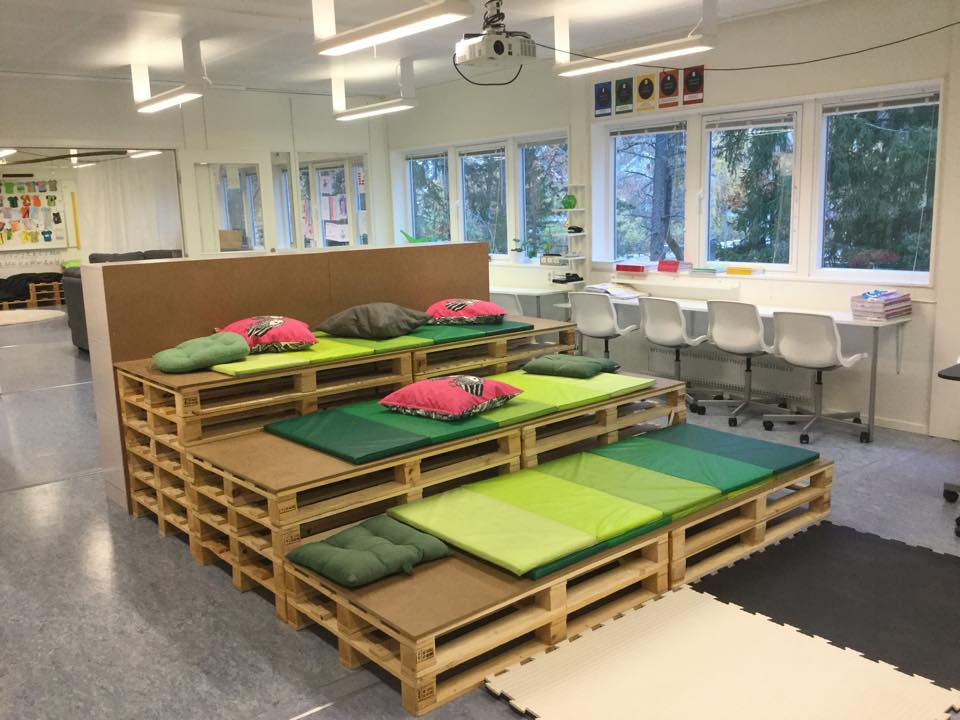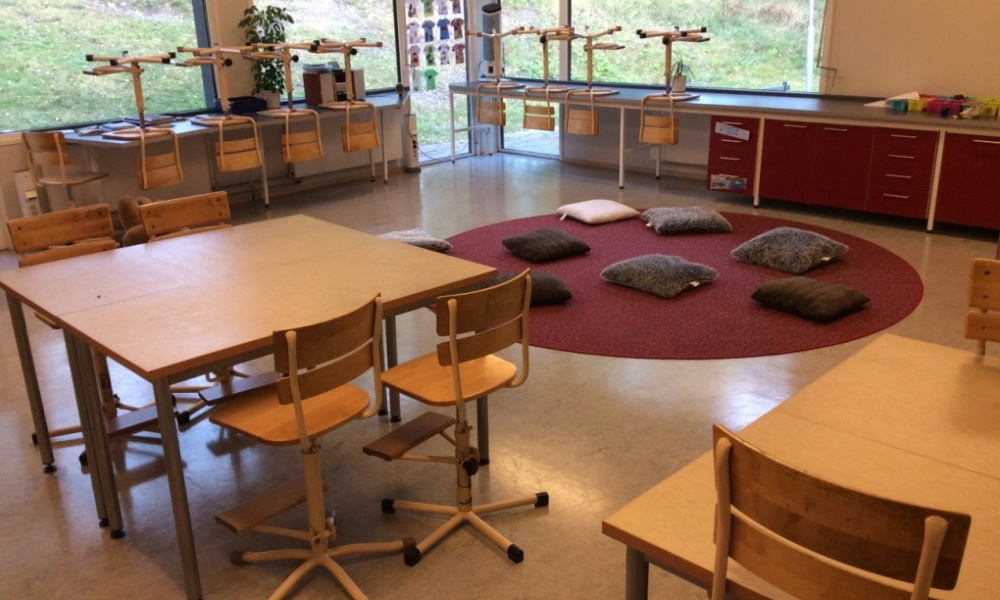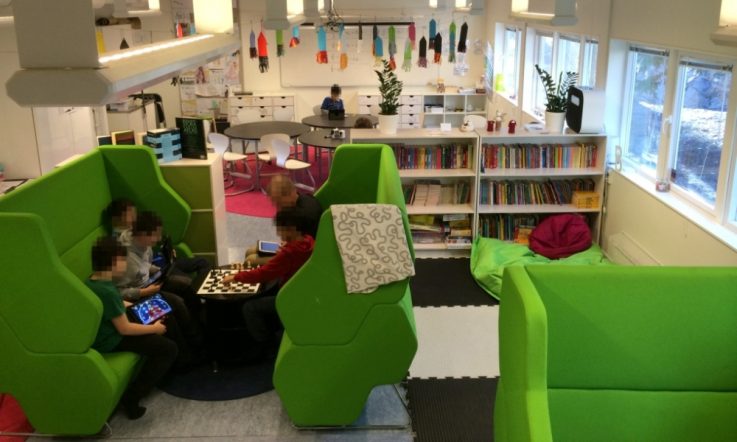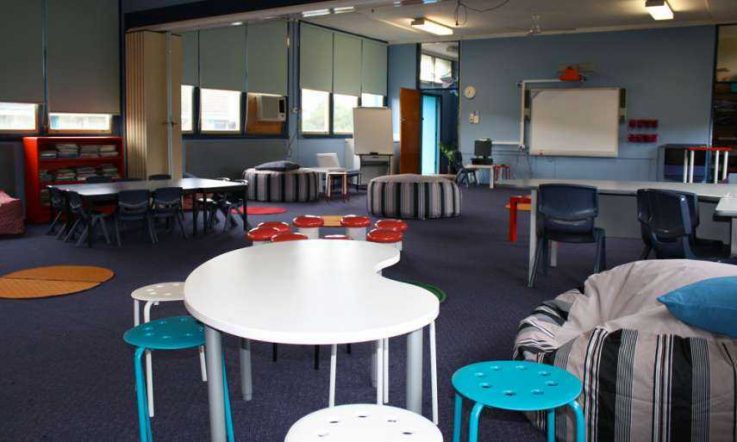In 2003, I interviewed Herman Hertzberger, an architect from the Netherlands, for an article I was writing.
I was very much interested in his perspective on school design; for he understood that classrooms should offer a variety of activity settings to support the diverse ways that people learn.
More importantly, he understood that learning should not be confined to the classroom, but rather must extend beyond the classroom, into corridor spaces (Lippman, 2013).
His design approach was innovative, because it was grounded in pedagogical concepts that he learned from his wife, who was a Montessori school teacher. Nonetheless, he revealed how he wished that the school design of Northern Europe was as pioneering as the work he had seen from the United States.
I was astonished by this, for I had always believed that the schools in Northern Europe were by far more innovative than what I knew in the USA.
Although school designers from the USA, Northern Europe, and Australia may believe that their own country's contributions to designing schools is lacking, this is not true.
We believe this because we only see what is published in magazines and presented at conferences. Notwithstanding, there are places that are guided by research, theory, and experience rather than normative theories about the spatial design of a place, or under the guise of 21st Century learning ideals.
On my recent trip to Sweden, to present at the Skolforum 2015, I recounted my journey on how my research on the spatial design of a place affords learning (PEHKA, 2012; Lippman, 1995). My approach is academic and undertakes creating activity-based learning environments (CABLEs).
CABLEs are places that connect and enable transactions between learners and the physical settings. The guiding principles for these environments are creating differentiated activity settings (Tharp & Gallimore, 1997) in the classrooms, providing defined breakout spaces outside and attached to each classroom (Lippman, 2013; PEHKA, 2012), and affording the ‘spaces-in-between' (Lippman, 2015).
Given my interview with Hertzberger, I was not surprised when teachers and principals came up to me after the presentations and expressed how they wished they would be able to create such transformative learning environments. Generally, the classrooms in which they teach are reminiscent of schools developed in the industrial revolution (Bissell, 1995), where desks are arranged in rows facing the teacher who sits behind a desk in front of a smart board. In these environments, learning is passive, individualised, and rote (Rieselbach, 1992).
These teachers and principals wanted to better understand the framework that I used. I explained to them that it is less about the building and more about understanding what activities are intended to occur in the spaces. It's about recognising that activities lead to transactions, which transform the learner so that they can develop skills that can be transferred across settings.

Skapaskolan in Sweden. Image: Peter Lippman.
Once we understand these concepts, the spaces are purposefully planned as integrated learning systems. Within these activity systems, each learner is valued and understood as an apprentice who will learn the shared practices within the learning environment (Wenger, 1998; Lave & Wenger, 1991).
Furthermore, it is about creating a place where people are encouraged, enabled and empowered to shape the spaces as needed (Arndt, 2012).
Lastly, they wanted to know if there were schools in Sweden that reflected these notions.
And the answer is, ‘Yes, they exist in Huddinge, Halsmtad, Halvedale, Sigtuna, and Kungsbacka.
‘In these places, the principals and teachers are creating and anticipating what the future of learning environments will be.'
Please note: This article has been updated to clarify the author's role. Peter Lippman is a school designer, education facility planner, researcher and an educator. Teacher apologises for the error.
References
Arndt, P. A. (2012). Design of learning spaces: Emotional and cognitive effects of learning environments in relation to child development. Mind, Brain, and Education, 6(1), 41-48.
Bissell, J. (1995). Patterns for Effective High School Environments. Unpublished Reese, (2003).
Lave, J., & Wenger, E. (1991). Situated learning: Legitimate peripheral participation. Cambridge university press.
Lippman, P. C. (2015). The Spaces in Between. Learning by Design, 24(Spring 2015), 8-9. Retrieved from http://pubs.royle.com/article/The+Spaces+in+Between/1958102/0/article.html
Lippman, P. C. (2013). Designing Collaborative Spaces. Campus Technology. , 26(9), 21-26. Retrieved from http://online.qmags.com/CPT0513?sessionID=A2489313BEEA9C741EFE5D411&cid=2347
Lippman, P.C, (1995). The meaning of constructed objects. Unpublished Master's Thesis. The Graduate Center, The City University of New York: New York.
PEHKA (2012). Unpublished Responsive Research Report. Projects for Environmental Health Knowledge and Action, Inc.
Reiselbach, A. (1992). Buildings and learning. New schools for New York: Plans and precedents for small schools. The Architectural League of New York: Princeton Architectural Press. Inc., 152-193.
Tharp, R. G., & Gallimore, R. (1991). Rousing minds to life: Teaching, learning, and schooling in social context. Cambridge University Press.
Wenger, E. (1998). Communities of Practice: Learning, Meaning, and Identity. Cambridge: Cambridge University Press. ISBN 978-0-521-66363-2.
Are your learning spaces suited to your teaching approach?
When designing your learning spaces, do you consider the activities that will be happening in them?



